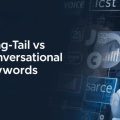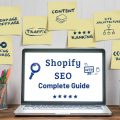Potential customers might be ditching your website right now, and you might not even realise it.
Every second of delay, every unresponsive button click and every fiddly page shift costs you real money in terms of lost sales and credibility.
While you worry about keyword density and backlinks to improve your search engine optimisation standings,
Google has gradually introduced something called Core Web Vitals. This isn’t just another buzzword to be bandied about at networking events; these figures are fundamentally altering the dynamics of search engines and who gets to sit at the top of page one. More importantly, they are affecting the conversion rates of visitors after they arrive on your site.
Think about the last time you turned off a webpage because it was painfully slow to load. Consider the instances where you attempted to click on a link, only to have the screen shift and your finger inadvertently land on something else.
You likely find it frustrating, don’t you? That split-second decision to leave probably occurred in a moment far shorter than you even had time to think of how it came about.
That is precisely what Core Web Vitals are measuring, and across millions of websites, Google is paying attention to each frustrated click and abandoned session.
What Are Core Web Vitals really about?
Core Web Vitals is Google’s attempt to quantify the user experience. Rather than running a test to see if your site loads, they also measure its responsiveness. It’s like asking if someone made it to the party instead of if they enjoyed it.
Core Web Vitals consist of three distinct factors that measure a web page’s loading performance, interactivity and visual stability. But here’s the intriguing part: these are not mere technical measurements that live in some developer’s dashboard. They can impact your search ranking, and they’re affecting your bottom line whether you realise it or not.
Google released the Page Experience update in 2021, concurrently making Core Web Vitals an official ranking factor. This significant algorithm update likely impacted many or most search results. This indicator is now the new standard for grading “on-page optimisation” for every website in every industry and competitive environment.
Per Google’s announcement, the new page experience signal will incorporate Core Web Vitals, along with a few other existing search signals—mobile friendliness, safe browsing, HTTPS security, and intrusive interstitial guidelines.
Breaking Down the Big Three Metrics
An introduction to Core Web Vitals is about understanding what Google concerns itself with. These three metrics together form the full picture of your site’s UX. Sure, they might sound technical, but in reality they are just showing how people interact with your site. And they offer reasons to leave in disgust.
These values are based on the importance of real-world action, which one would prefer to optimise. Instead of just measuring pure technical performance, they show how well the tools are working for users, if a visitor keeps flowing along or bounces off due to friction.
Let’s look more profoundly at what each of those metrics really means to an analysis of a business.
Largest Contentful Paint (LCP) – Loading Performance
The LCP looks at when your largest piece of content loads to view it—this could be your hero image, main text block, or video thumbnail. Google wants it in 2.5 seconds, but with most websites clocking in at anywhere from 4 to 6 seconds, you’re putting users into the ‘danger’ zone, where they begin wondering whether your website is worth waiting for or not.
The tricky part? It’s not just server speed. Large, unoptimised images are often the worst culprits, followed closely by slow server response times and resource blocking. Even with fast servers, a site may still receive low LCP scores due to the loading of large images or inefficient code.
First Input Delay (FID) – Responsiveness
FID captures the time from when a user first interacts with a page (i.e., when they click a link, tap on a button, or use a custom, javascript-powered control) to the time when the browser is actually able to begin processing event handlers in response to that interaction. Google hopes that it will be able to deliver results in under 100 milliseconds, which is effectively instantaneous.
This is a sneaky measure – your page may look rendered while JavaScript executes in the background (anything from 1 to 5 seconds). And users end up with the frustrating experience of feeling that awful “dead click”, trying again, and leaving in frustration. The worst part? FID issues often happen with Google’s business profile integration and personalised flow.
Cumulative Layout Shift: Visual Stability
With such an increase in rendering performance, it’s inevitable that there are associated user experience implications too.
Too “difficult to use” if you are not capturing user input at all on mobile or desktop:
CLS is the degree to which page elements move during loading. Have you ever gone to a page and gone to click something, but the site just moved something above so what you are clicking jumps? Google tracks these changes and prefers a score below 0.1.
Layout shifts occur when images are loaded with no specified dimensions, ads push content down, or fonts modify the text layout. A seemingly small technical problem leads to huge trust issues Nothing says “unprofessional” like content that shifts under your hand.
The UX Connection That Everyone Misses
Here’s what many businesses fail to realise about Core Web Vitals: they don’t actually have much to do with technical performance. It’s just human psychology and user behaviour. People quickly form opinions about your credibility, professionalism, and the worth of your time when they visit a website.
A slow-loading website is more than just frustrating for users; it subconsciously tells them that your business may be outdated, untrustworthy, or even unworthy of waiting. Research shows 7% of conversions drop for every additional second it takes for your business website to load. That’s right: 7% of your website viewers could leave your site without making a purchase, simply because it took one more second to load.
But the effects run far deeper than any single user experience. Bad Core Web Vitals are a doubly problematic issue. If your site is terrible to use, users will be less likely to return, less likely to recommend you, and more likely to choose one of your competitors in the future.
Google’s algorithm then tracks these behavioural metrics (bounce rate, time on site, and repeat visits). We refer to this as the “Performance Death Spiral”.
Bad Core Web Vitals cause bad user experiences; those in turn produce poor engagement signals, which would result in positioning loss, less organic traffic and fewer conversions/earnings.
Professional SEO Services And The Core Web Vitals
This is where an experienced SEO consultant can be priceless. We examine the intricate structure of your website architecture to identify areas for improvement or correction.
“One thing we do in our technical SEO audits is a full Core Web Vitals audit—everything from lab testing to joining real user performance data with Search Console and so on.
In our case, we can see how your server setup, content delivery, 3rd-party integrations and code organisation were causing particular friction in directing users through your pages with their own computers.
The site structure improvement work we do regularly locates issues of this kind that are not apparent at first glance. Inappropriate internal linking leads to unnecessary redirects that delay access. Poor performance in database queries can lead to server-side delays, which then affect LCP.
If you don’t implement these technical items correctly, they can lead to errors – but how will you know? These are the types of problems that require a combination of SEO skills and technical knowledge. We continually monitor for changes in Core Web Vitals as your site updates.
Placing new content, updating plugins or switching hosting companies can all affect your scores. It aids in identifying and fixing issues before they can impact your search rankings.
Want to boost rankings by improving Core Web Vitals and user experience? Start by exploring our SEO services.
The Content and Conversion Connection
Here’s something that tends to fall through the cracks in discussions around Core Web Vitals: the connection between page speed and how effective its content is. Not only do fast-loading pages rank higher, but they also give your content a much better chance of actually turning visitors into customers.
When users can get to your content fast and interact with it easily, they’re more likely to engage with your message at a deep level. They will read more, click more and eventually take the actions you want them to. This results in a virtuous circle whereby improved technical performance leads to enriched user engagement, which, in turn, supports your search rankings.
Our content analysis checks Core Web Vitals when evaluating the performance of your current content in terms of users and search engines. Sometimes the answer is not just technical optimisation; it’s organising a solution to load more quickly, without losing flexibility and persuasive depth.
What makes Core Web Vitals so important for local businesses:
- Mobile-first local search: Local search is primarily mobile-based, so needs good Core Web Vitals performance on mobile
- Time-restrained user behaviour: People who search locally demand to have their needs met in the moment and will immediately click away from a slow site.
- Incorporating Google Business Profile: Your profile should match with performance elements of your website
- Citation and directory influence: When another listing points to your website and performance is underwhelming, it reflects poorly on you as well as the recommending directory
- Area-targeted focus: A localised content strategy should be relevant and fast. The theory behind the great local content is about making it relevant to the people who see it.
Because local searches are done primarily on mobile, we pay special attention to mobile Core Web Vitals performance in our local SEO. Google Business Profile integration and personalised page-specific targeting enhance its local content strategy. We also get trades on Core Web Vitals performance.
The building of local citations, as well as industry directory submissions, should consider your page speeds. Whether they are external listings or backlinks to your site, they could lead to user frustration.
If someone clicks through from a directory listing only to find themselves facing an extremely slow-loading website, it does nothing beneficial for your business and reflects badly on the directory too.
Your Next Steps
Core Web Vitals represent a fundamental shift in how search engines evaluate websites. They’re not a temporary trend or a minor ranking factor — they’re a permanent part of the digital landscape that will only become more important over time.
The question isn’t whether you should optimise for Core Web Vitals; it’s how quickly you can implement improvements compared to your competitors. You lose out on potential traffic, leads, and revenue every month you delay.
If you’re ready to stop losing customers to slow page speeds and start using Core Web Vitals as a competitive advantage, the team at SEO Perth Experts can help. Our comprehensive SEO consulting packages include everything you need to identify, prioritise, and implement improvements to Core Web Vitals that move the needle for your business.
Don’t let poor user experience continue to undermine your digital marketing efforts. Contact our team today to schedule a complimentary SEO audit that includes a Core Web Vitals assessment. Let’s turn your website into the fast, user-friendly conversion machine it should be.
Want to improve your rankings with better Core Web Vitals and UX? Contact us today to get started.






